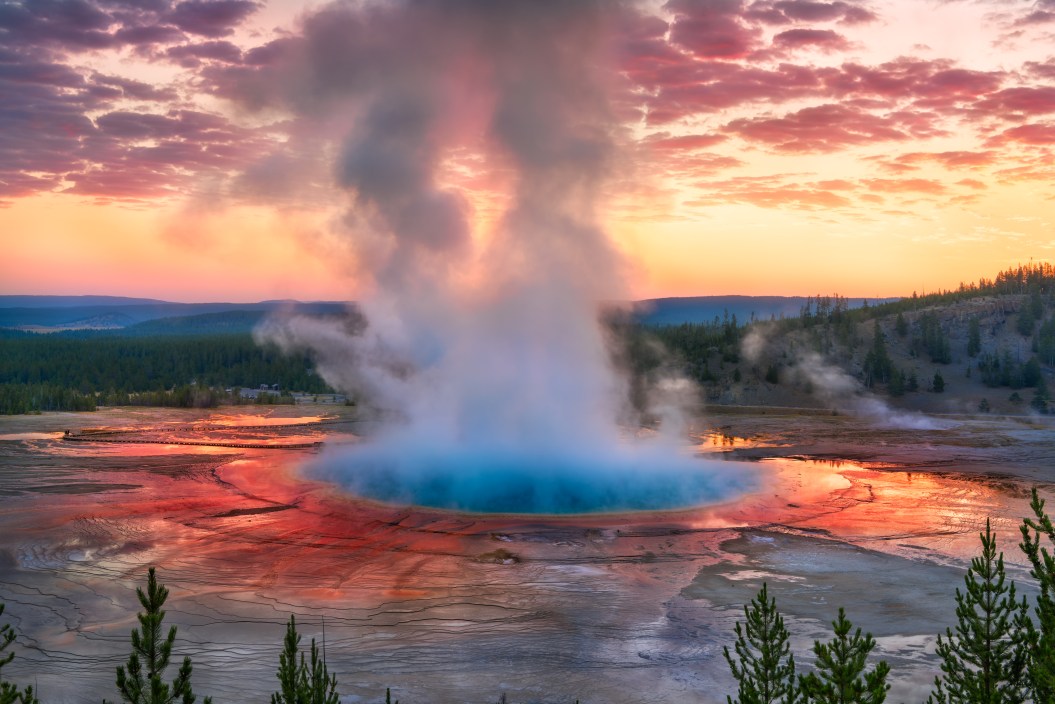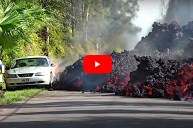Yellowstone National Park started the 2024 year off with a rocking party of its own making, recording two earthquakes in the very first week of the new year.
The first was a 3.1-magnitude earthquake on New Year's Day, followed by another 3.1-magnitude earthquake on January 3. The earthquakes' epicenters were roughly 18 miles east of West Yellowstone, close to the Lower Geyser Basin, six miles underground. The earthquakes are known as a "swarm" because they happened in approximately the same place in quick succession.
A quick look at the Yellowstone Volcano Observatory map further reveals that numerous other, smaller seismic events have also happened, including a 1.6-magnitude earthquake on January 7. However, luckily for all of us, the earthquakes were not a sign of imminent volcanic eruption, and were separate from the Yellowstone supervolcano, as most of the park's seismic activity is.
The Yellowstone Volcano Observatory consists of the US Geological Survey (USGS), various universities, and state geology agencies. Its task is to monitor the Yellowstone Caldera, also known as the Yellowstone supervolcano, in the national park and increase our understanding of the seismic activity in the park.

Getty Images, Algol
Earthquakes are common in Yellowstone, and the park is one of the most seismically active areas in the United States; between 1500 and 2500 earthquake events are recorded in Yellowstone each year. You'd think that the Yellowstone caldera would be to blame. Measuring 43 by 28 miles and formed during three super-eruptions in the last 2.1 million years, the caldera lies over the Yellowstone hotspot, where hot magma from the earth's interior rises to the surface. This magma causes Yellowstone's famous geysers and hot springs.
While the caldera does create a network of earthquake-causing fractures in the earth's crust, Yellowstone is also in an area of tectonic faults that are separate from the caldera, like the Teton and East Gallatin faults. The rock at these cracks is under so much stress that it eventually slips, or breaks, causing an earthquake.
"Swarms" of earthquakes are also common in Yellowstone because of how many small fractures there are in the rock. Michael Poland, the scientist in charge at the Yellowstone Volcano Observatory, told Wide Open Spaces that swarms are often caused by water interacting with preexisting faults. "When you add water to the mix, earthquakes—especially small ones— become even more likely."
Most Yellowstone earthquakes are small, with a magnitude of 2 or lower, making the two this year a bit higher on the scale than usual. Yellowstone had four 3-magnitude earthquakes in 2023, a slow year, and usually gets a 4.0-magnitude earthquake every couple of years. The largest earthquake in the park was a 6.1 earthquake on June 30, 1975. The Hebgen Lake earthquake in 1959, which killed 28 people, was a 7.3-magnitude, but the epicenter was actually outside the park's boundary, in Montana.
While the sheer number of earthquakes that happen around Yellowstone's volcano may seem alarming, Poland says that different volcanoes have different personalities— and Yellowstone's is normal. "Yellowstone is noisy, and what we see happening in terms of earthquakes [in Yellowstone] is effectively background [noise]. Yellowstone is something of a volcano diva."
The majority of Yellowstone's earthquakes (99% according to Poland) are too small to be felt by humans. In 2023, only one earthquake was felt, a magnitude-3.7. According to the USGS, ones that can be felt by humans can feel like a sharp jolt, followed by a stronger, sharp quake that passes quickly. If you're far away from the epicenter, a small earthquake might only feel like a subtle shake.
Earthquakes, large or small, can't be predicted. Poland stresses that, despite this, it is important to know what to do in the event of a larger, magnitude-6 or higher, earthquake. If caught outdoors, you need to be aware of your surroundings and watch out for rockfall. Stand in an open area away from trees or buildings, get low to the ground, and stay still until the shaking stops. If inside, shelter under a table or desk and hang on until the shaking stops.




